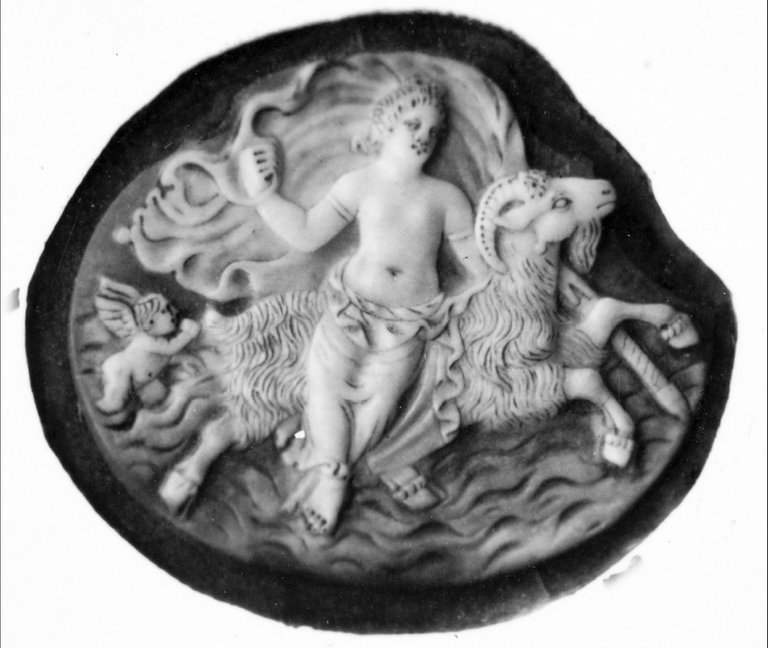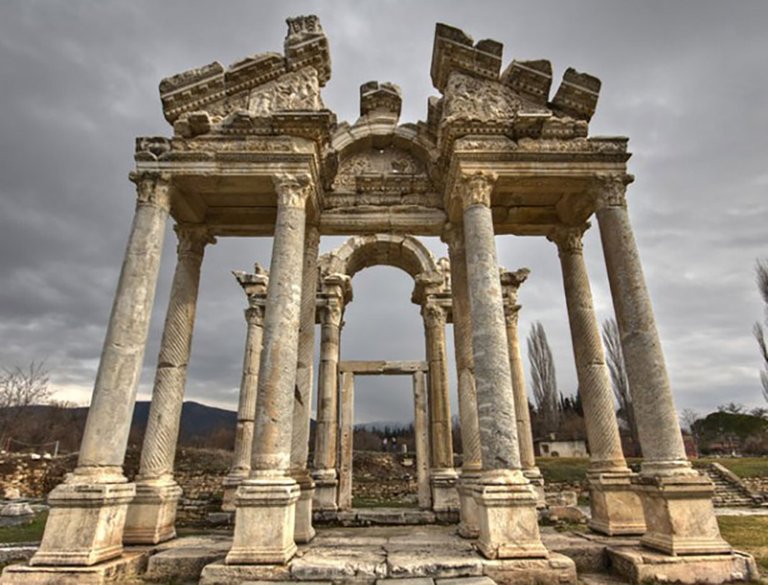The series of plates belonged to a cenotaph for Zoilos from Aphrodisias, a freedman of Octavian. Since he appeared as a benefactor in his native city, this monument was in the second half of the 1st century BC. built for him. Among the foundations of Zoilos was the stage building of the theater. The relief panels of the monument were found in the northwest of the city, behind the present-day museum. At present, it is not yet possible to determine the shape of the monument itself and its exact location.
1st plate: A herme on the left of a hanging wreath marks the place of the event: a public square or a gymnasium in front of a sanctuary. Demos, the personification of the people, so inscribed, advances to the right on Zoilos. The demo wears a himation and wears a scepter with a carved pommel, pointing to the wreaths hung on the wall in the background.
2nd plate: Zoilos faces Demos and extends his rights to him. He is dressed as a traveler and wears a relatively short coat (Chlamys) over a wide-sleeved tunic and a round hat (Petasos).
3rd plate: A woman, seen in the three-quarter prole, as a personification of the polis marked by an inscription and the mural crown on his head, holding a wreath over the head of Zoilos. She is wearing a peplos and a short coat, which billows behind her head in the wind.
Plate 4: Zoilos stands under two suspended wreaths, in the attitude of a Roman orator. He wears a tightly wrapped around the body toga. To the left of him is a woman, inscribed as the Personification of Time (honor). Her right hand is stretched out to the head of Zoilos, either in the gesture of protection or garlanding him. She wears a coat, which is thrown over the left shoulder, but leaves the whole upper body free. In the left she holds a cornucopia.
5th plate: A female figure in the three-quarter prole seen to the right. Her left leg is set, with her left hand holding a shield decorated with a gorgoneion. An inscription calls her Andreia (Latin Virtus) i. as a personification of manliness.
Plate 6: Right, an old, bearded man, sitting on a rock and looking to the left. He wears a long-sleeved undergarment and a coat pulled over the back of his head. He has his right hand on his temple. This figure is also inscribed and therefore to be interpreted as Aion (Greek = eternity).
Plate 7: A seated, helmeted woman, looking to the left. She wears an undergarment that leaves her right breast and shoulder free, and a coat. She leans her left arm on a sign that stands on a plinth and holds a spear in her right hand. An inscription is not preserved, but the figure is clearly interpreted as the armed goddess Roma in Amazonian costume.
This only partially preserved group of reliefs testifies to the mastery of the sculptors of Aphrodisias as early as the second half of the 1st century BC.

